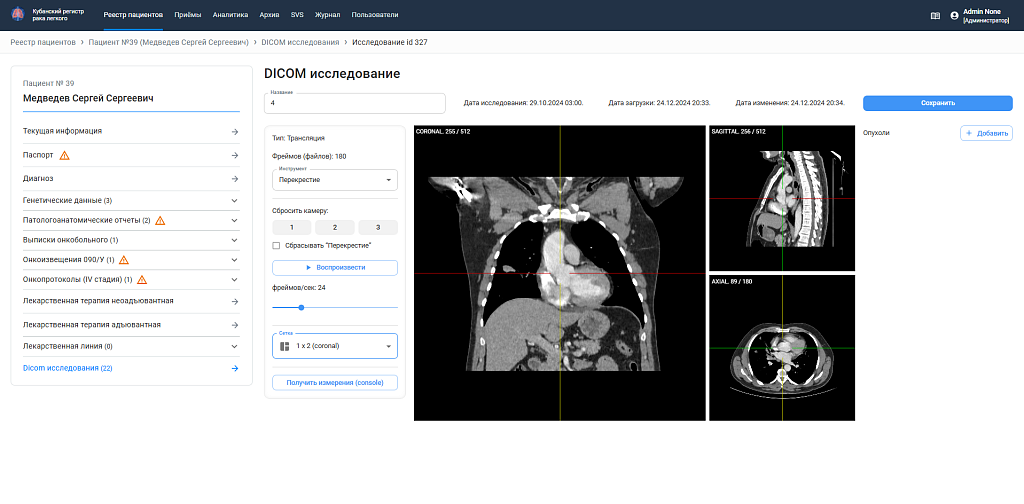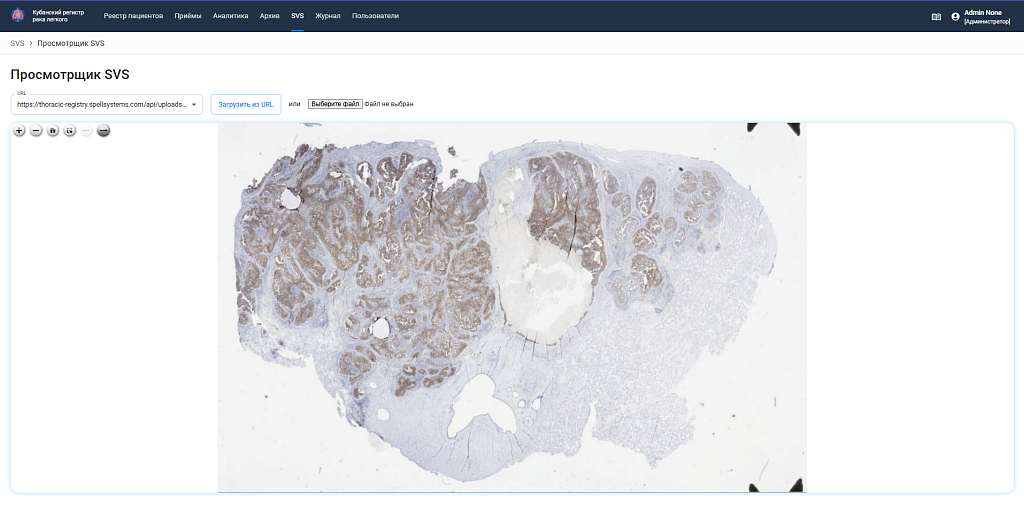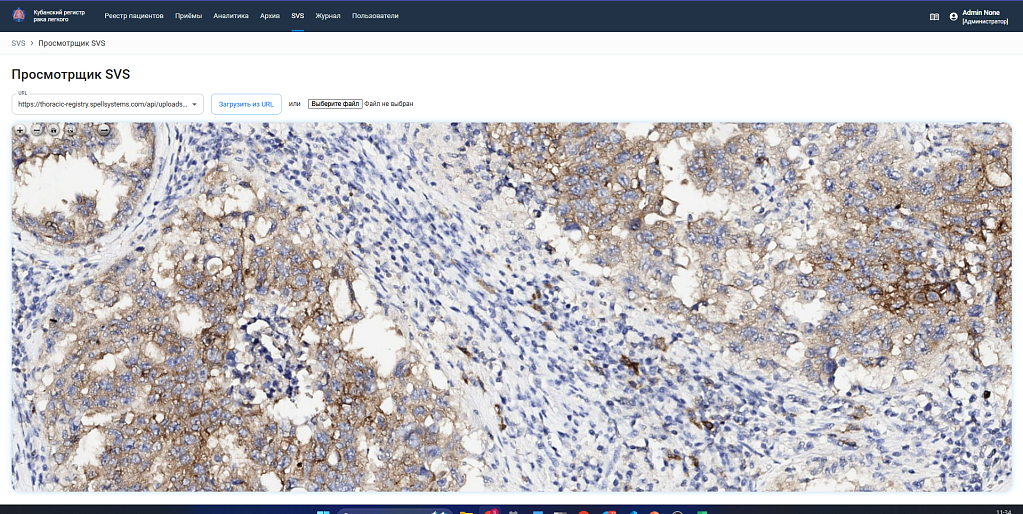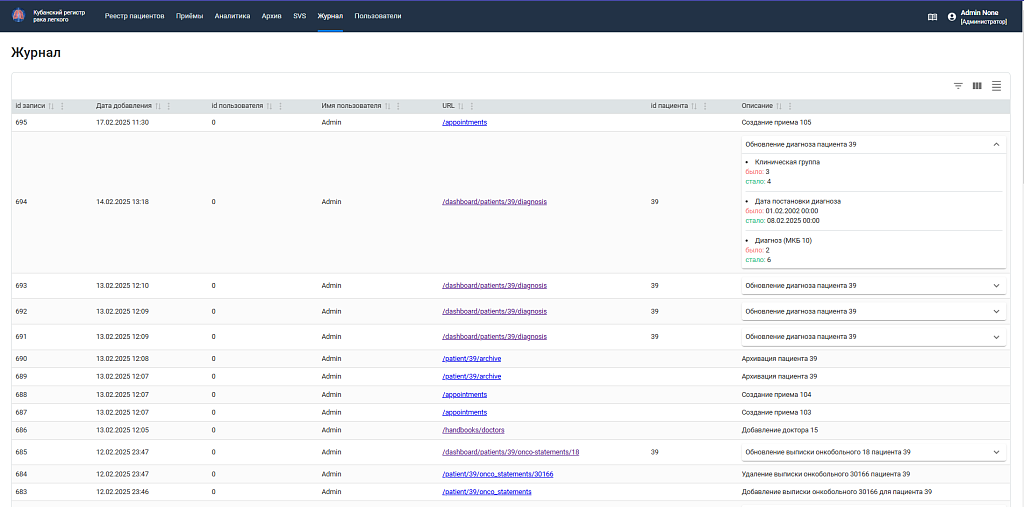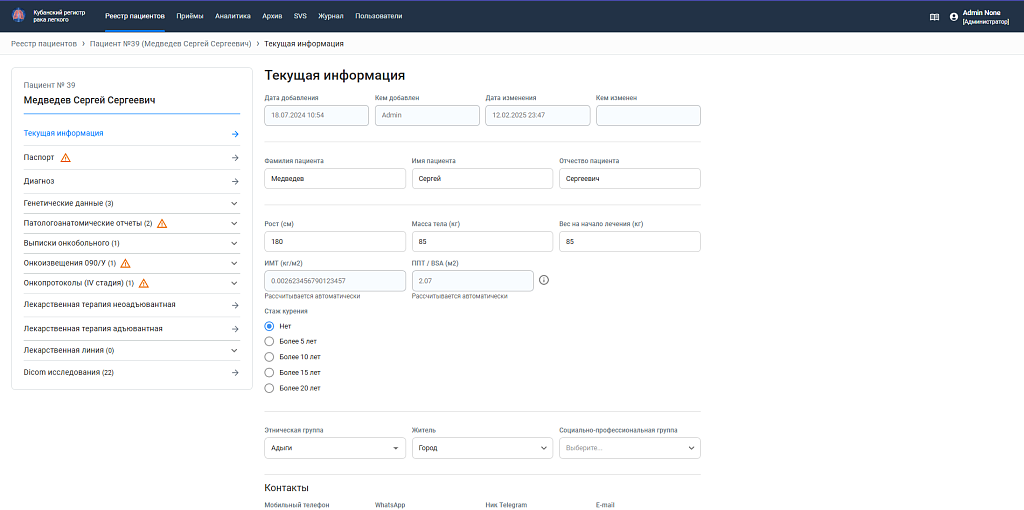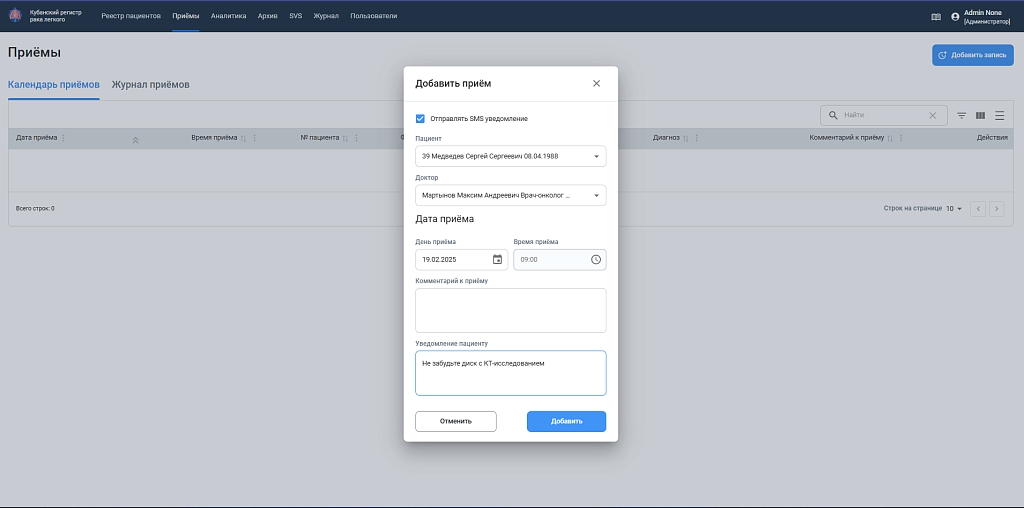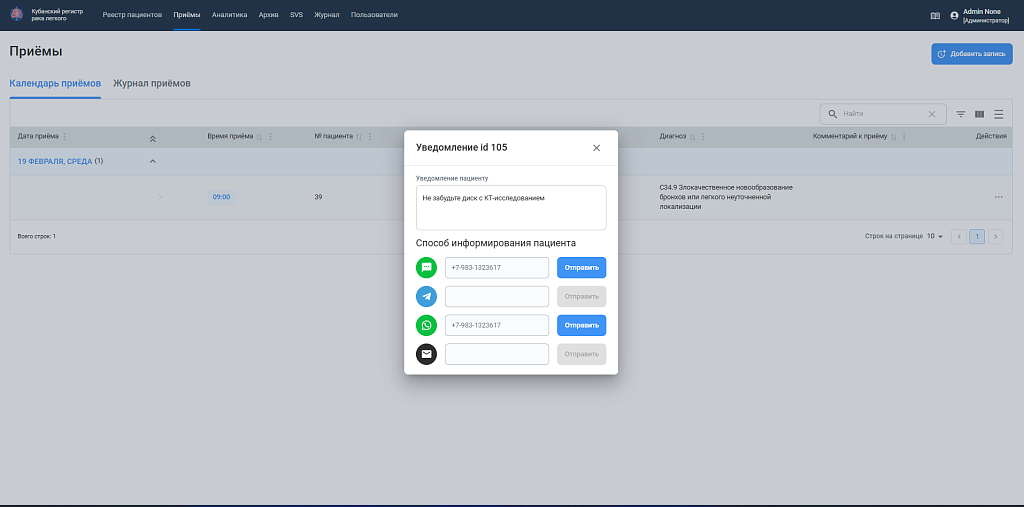About project
The Oncology Medical Information System serves as a unified data repository for lung cancer, integrating both accounting and analytical functions. The system is designed to enhance oncology data management, ensuring precise structuring, analysis, and reporting. It operates within the Scientific Research Institute - Regional Clinical Hospital No. 1 named after Professor S. V. Ochapovsky in Krasnodar.
Facts
Secure and restricted access within the hospital network.
Automated data processing and analysis.
Real-time visualization of key oncology indicators.
Built-in DICOM and microscopy study viewers.
Integrated appointment and visit log management.
Customer
Scientific Research Institute - Regional Clinical Hospital No. 1 named after Professor S. V. Ochapovsky, Krasnodar.
Spellsystems Role
SpellSystems was responsible for:
- System architecture and software development.
- Backend and frontend implementation.
- Integration with medical imaging tools.
- Deployment using Docker.
- Ensuring compliance with GMP standards.
- Implementing a secured user access system.
Goal
The system aims to streamline oncology data management by providing healthcare professionals with structured and comprehensive patient records. It enhances diagnosis, treatment planning, and statistical analysis.
Implementation
Patient Registry
- Tracks, searches, filters, and manages patient records.
- Stores essential patient information, including:
- Personal details and passport data
- Diagnosis and genetic data
- Pathological reports and oncology discharge summaries
- Medication history and DICOM studies
- Provides advanced filtering and data export options.
- Enables real-time statistical visualization of oncology data.
- Includes key metrics:
- Incidence rates and distribution by gender, stage, and classification (ICD-10)
- Mortality rates
- Generates reports for trend analysis and research.
- Supports web-based viewing of DICOM images (CT, PET-CT, MRI, ultrasound).
- Provides:
- Image scrolling across axial, sagittal, and coronal planes
- Time-based playback
- Measurement of length, width, angles, and tumor growth
- Allows web-based access to microscopic images (SVS format).
- Supports integration with external storage solutions (e.g., Yandex.Disk).
- Manages patient appointments efficiently.
- Sends automated notifications via SMS or email.
- Logs appointment details, including doctor, location, and time.
- Enables dynamic configuration of dropdown fields without coding.
- Stores standardized medical data, such as:
- Patient and doctor directories
- Organizations and diagnoses
- Logs all user actions for audit purposes.
- Restricts patient record deletion, allowing only archival.
- Ensures secured access via login-password authentication.
- Ensures traceability by linking records to source data.
- Uses standardized classifications:
- ICD-10 (Primary standard)
- ICD-11
- ICD-O
- Provides insights on cancer diagnosis and treatment, including:
- Patient statistics by stage, type, and survival status
- Trends in diagnostic periods and treatment efficiency
- Mutation spectrum and genetic mutation reports
- Histological cancer types and molecular mutation analysis
Technologies
Basic technologies
1
- Python
Storing and working with data
2
- PostgreSQL
Web Interface
3
- React.js
Infrastructure
4
- Docker

